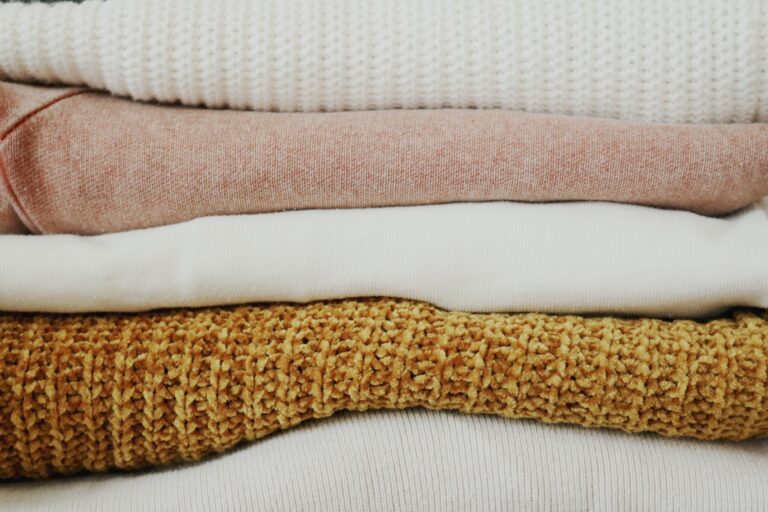Sustainability has grown in importance for businesses, brands, and consumers in the ever-changing fashion sector. Circular clothing has started to be seen as a feasible solution to the issue as people become more aware of the effects of climate change on our planet.
But what does this idea entail in reality? What are its benefits for us? Is it a sustainable approach in the truest sense, or is it just another example of greenwashing? We’ll explore the idea of circular fashion and consider its possible benefits in this blog.
Table of Contents
Circular fashion: what does it exactly mean?
The term “circular fashion” describes a different closed-loop business model for the production and consumption of clothing. This strategy places emphasis on the value of reusing materials and prolonging the lifecycle of products rather than continuously making and discarding clothes.
It is a cost-effective production cycle that optimizes manufacturing procedures, reduces waste generation, lowers pollution levels, and supports renewable energy projects.
The business model of circular fashion
The business model of circular fashion is based on the idea that clothing should be designed, produced, and sold with an eye toward durability and longevity. Clothes should be made to last longer; they should also be easy to repair and recycle when they reach the end of their life cycle.
This way, the resources and materials used to produce them can be reused, reducing waste and pollution while also enhancing sustainability.
The 5 benefits of circular fashion
Here are the five benefits of circular fashion.
1. Reduce costs
In circular fashion, companies focus more on the durability and longevity of the clothes produced, which in turn, reduces production costs. It’s why they produce few apparels of excellent quality. In this way, they save money and resources which otherwise be unnecessarily used in the production processes.
2. Optimises manufacturing processes
Circular fashion lowers the time, money, and resources consumed in production processes by promoting the production of high-quality apparel. It optimizes the industrial processes as a result.
Additionally, under this approach, businesses are not required to develop new products every day. All they have to do to make something new is reuse, fix, or repurpose already-existing materials.
3. Minimises waste production
As this fashion encourages the reuse and recycling of materials, it helps reduce overall waste production. This can not only help cut down on pollution levels but also save companies money in the long run.
4. Decreases pollution levels
By focusing on durable, well-made items, companies that use this fashion model are able to reduce their environmental impact. As fewer resources and materials need to be used in production, pollution levels drop significantly.
5. Promotes green energy
By minimizing waste production and consumption of resources, this fashion model also helps conserve energy. Companies can invest in green energy initiatives like solar and wind power to reduce their overall carbon footprint.
Read also: Sustainability in the fashion industry, the latest trends
Is circular fashion a sustainable model or another way of greenwashing?
Circular fashion is a sustainable model of clothing production designed to reduce waste and its environmental impact. This fashion aims to keep resources in use for as long as possible while closing the loop on production, reuse, and recycling.
This means that resources are reused over and over, reducing the need for new resources and limiting waste. Circular fashion is not just a marketing ploy or another way of greenwashing – it is a genuine way to reduce the environmental impact of it.
How can you contribute to circular fashion
With sustainable circular fashion becoming the need and trend of the hour, you must wonder how to catch up with the model. To start off:
- buy mindfully;
- examine each product you’re buying and analyze its impact on the environment;
- ensure that the product is durable and reusable;
- go for clothing brands that use sustainable materials, such as organic cotton, hemp, or bamboo.
Don’t hesitate to attend swapping events and participate in upcycling projects. Make thrift stores your go-to shopping destination. Lastly, donate your old clothes and other products to charity or a recycling center. With these baby steps, you can kickstart your sustainable this fashion journey.
The future of circular fashion
The creative and environmentally friendly circular fashion paradigm will transform the cloth industry. It can considerably lessen our influence on the environment by reducing waste production & encouraging reusing & recycling.
Given the wide adoption of this sustainability strategy by brands and businesses, the future of circular fashion is promising. Initiatives like zero-waste clothing lines, upcycling competitions, and the use of sustainable materials in manufacturing are becoming more prevalent.
Companies are modifying their manufacturing strategies and accepting this fashion as the industry norm as customer knowledge and demand for sustainable apparel increase. We can all help the development of circular fashion as customers by making more thoughtful purchases and promoting companies that value sustainability.
Read also: The cost of fast fashion industry: the human, social and economic impact












